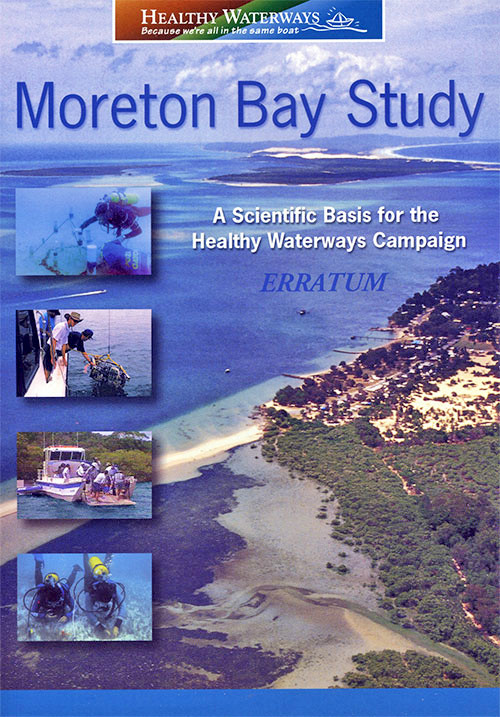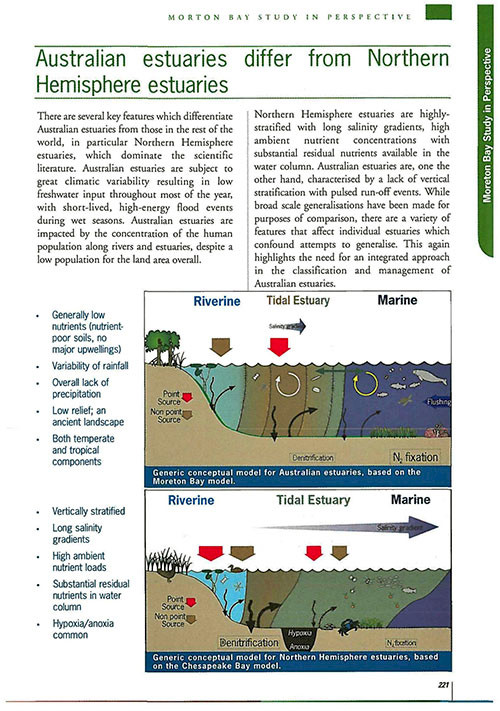Moreton Bay Study: A Scientific Basis for the Healthy Waterways Campaign
Bill Dennison ·Moreton Bay Study is now available for free in PDF format from IAN Press.

This book was the second of a series of four books produced as part of the Healthy Waterways campaign in Southeast Queensland. It was published in 1999 and was the first summary of the scientific findings of Healthy Waterways. There are several features of this book that established some precedents for publishing science communication books, approaches now employed by the
This book was produced very rapidly, responding to an urgency to build and maintain momentum for the Healthy Waterways campaign. The book was initiated in the early part of 1999, with half-day storyboard sessions on the Healthy Waterways whiteboard. My co-author, Eva Abal, and I completed it in six months, relying on several science communicators; Jane Rogers, Catherine Collier and Caroline Gaus. A one point in the production of this book, I recall that Eva and Cath Collier were working late at the Healthy Waterways office in downtown Brisbane and I was home with a toddler and a baby while my wife was away. We were on printing deadline, so Eva and Cath would finalize a draft chapter, put it into a taxicab which delivered it to my house. I would review the chapter and call them with edits. I still wonder what the neighbors thought about taxis arriving throughout the night to drop off packages without any passengers.
The rush to publication created a slight hiccup with the final printed copies. It turned out that the page proofs did not use the exact same printing technique as the final print. As a result, it was not until we had the final printed book in our hands that we noticed that the small arrows used in the water circulation maps of Moreton Bay (pp. 26-27) were not visible. In addition, the wind and tide lines in the resuspension graph (p. 57) were also not visible. The printer produced an erratum insert which we added post-production.

When my Marine Botany Group at the University of Queensland moved into a newly renovated laboratory in Hines Building, one of the things we chose for wall decorations was a display of this book. Diana Kleine carefully took apart two copies of the Moreton Bay Study and made a giant poster of the 258 page book.
Following the debacle regarding the logos on previously published ‘Crew Guide’, we elected to include nine logos on the back cover. I remember the observation at the end of the process of producing this book that we had expended considerable resources to develop a computer model of Moreton Bay, yet only had a few pages of output to use in the book. This was rectified in the next phase of the program. One of the things that I enjoy, fourteen years after its publication, is looking at the photographs and reviewing the list of various people’s names at the beginning of the book. It is nice to recall working closely with a diversity of committed and passionate people who helped make the experience meaningful and enjoyable.
About the author
Bill Dennison

Dr. Bill Dennison is a Professor of Marine Science and Interim President at the University of Maryland Center for Environmental Science (UMCES).
Next Post > The crew member's guide to the health of our waterways
Comments
-
Atika 6 months ago
Thank you for sharing this great information with us, i really appreciate your post!